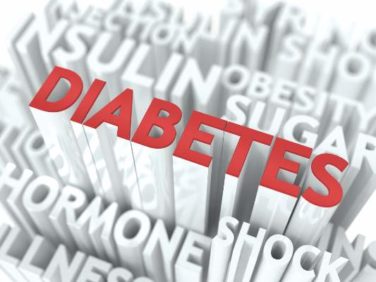AT DDW
CHICAGO (FRONTLINE MEDICAL NEWS) – An investigational inhibitor of the Janus-1 kinase receptor induced clinical and endoscopic remission at several doses in patients with long-standing, treatment-resistant Crohn’s disease.
The two highest doses of upadacitinib (ABT-494; AbbVie) also allowed about 30% of patients to rapidly withdraw systemic steroids and stay in remission during the 16-week dose-finding induction trial, William Sandborn, MD , said at the annual Digestive Disease Week.
“This rapid steroid tapering was a unique feature of the trial,” said Dr. Sandborn of the University of California, San Diego. “Usually during induction trials, steroids are held fixed at 20 mg-30 mg throughout the trial and then withdrawn to maintenance levels.”
The placebo-controlled study, dubbed CELEST, investigated upadacitinib in four doses. The results did have a few twists, however. None of the doses tested achieved both of the coprimary endpoints of clinical and endoscopic remission. Additionally, clinical remission relative to placebo didn’t achieve statistical significance in any group until the results were analyzed with a revised stool frequency cutpoint of less than 3 per day, rather than 1.5 per day, as the analysis specified.
The preplanned analysis used a unique composite outcome of 7-day stool frequency and abdominal pain. At the time of trial design, the scale had only been validated in patients with mild-moderate Crohn’s, so the investigators used the validated stool frequency cutpoint of 1.5 per day as a measure of clinical remission.
That was not an appropriate target for this unique study group, Dr. Sandborn said.
“CELEST was the most refractory patient population ever recruited into a Crohn’s disease clinical trial. If we could do this over now, we would use a cutpoint of less than 3 instead of 1.5 or less. This is a really tough clinical endpoint” that probably isn’t a realistic clinical goal for patients in this category. “There’s no way we would do it this way today. A number of studies since then now suggest that the right cutpoint for remission in these patients would be about 3 per day.”
CELEST enrolled 220 patients who were randomized to five treatment arms comprising 30-35 patients each: placebo; twice daily upadacitinib at 3 mg, 6 mg, 12 mg, and 24 mg (24 mg BID); and 24 mg once daily (24 mg OD). The study lasted 16 weeks and was followed by 36 weeks of blinded extension treatment. Dr. Sandborn reported the 16-week induction phase data.
The patients had moderate to severe Crohn’s disease, with a mean baseline Crohn’s Disease Activity Index (CDAI) score of about 300 and a Simple Endoscopic Score-Crohns disease (SES-CD) of about 15. About 95% had already failed at least one anti–tumor necrosis factor (TNF) drug. Half had failed at least two.
The coprimary endpoints were the proportion of patients who achieved clinical remission (stool frequency of 1.5 or less per day and abdominal pain of 1 or lower) at week 16 and endoscopic remission at weeks 12 or 16. Secondary endpoints included CDAI response, clinical response (at least a 30% reduction from baseline in stool frequency or abdominal pain), and endoscopic response.
In the primary analysis, the rate of endoscopic remission was significant (P less than .05) in both the 24-mg BID and the 24-mg OD groups. However, clinical remission with the original stool frequency cutpoint of 1.5/day or less wasn’t significantly different from placebo in any group. Dr. Sandborn did point out a 27% rate of clinical remission in those taking 12 mg, which had a P value of less than 0.1, relative to placebo.
Among the secondary endpoints, remission as measured by the CDAI score (less than 150) occurred in 39% of those taking 12 mg – the only significant response in that category.
The rate of endoscopic response (at least a 50% improvement in endoscopic findings) was 21% in the 6-mg group and 25% in the 24-mg OD group (P less than 0.05) and in about 30% of the 12-mg and 24-mg BID group (P less than 0.01).
When the clinical remission analysis employed the revised stool frequency cutpoint of less than 2.8/day, clinical remission rates improved somewhat. Almost 40% of those taking 24-mg BID achieved clinical remission (P less than 0.01), and 30% of those taking 6 mg achieved clinical remission, but the significance was marginal (P less than 0.1).
Steroid-free remission rates were significantly better than placebo in the 18-mg group (39%) and the 15-mg group (33%), both with a P value less than 0.05.
Dr. Sandborn also showed dramatic changes in C-reactive protein and fecal calprotectin. These dropped precipitously in all active groups by week 2, in a dose-respondent manner, and stayed well-suppressed in the two highest-dose groups. In the placebo groups, C-reactive protein rose over the 16 weeks, and fecal calprotectin remained unchanged from baseline.
The drug was reasonably well-tolerated and safe. About 80% of each dosing group reported at least one adverse event. The 12-mg dose appeared particularly troublesome, with 25% stopping because of an adverse event. By comparison, the discontinuation rate was 8% in the 24-mg BID group and 14% in the 24-mg OD group.
Serious adverse events were consistent with what is known about the JAK1-inhibitor safety profile, Dr. Sandborn said. There were nine serious infections, including Escherichia coli bacteremia, subcutaneous abscess, and sepsis (3-mg group); anorectal abscess, urinary tract infection, and sepsis (12-mg group); sepsis (24 mg BID); and peritonitis and sepsis (24 mg QD). There was one nonmelanoma skin cancer, which Dr. Sandborn said was probably pre-existing but not recognized at baseline. Three cases of herpes zoster occurred, all in the 24-mg BID group.
One patient experienced a gastrointestinal perforation, which sometimes occurs in Crohn’s disease. Two patients experienced a myocardial infarction, a number “too small to understand fully,” Dr. Sandborn said.
The drug will move forward into phase III trials, but the final dose hasn’t been decided on.
Dr. Sandborn has received consulting fees from AbbVie, which is developing the drug and sponsored CELEST.
On Twitter @alz_gal





